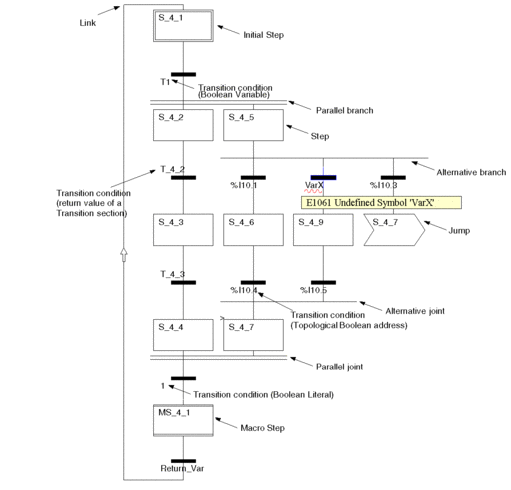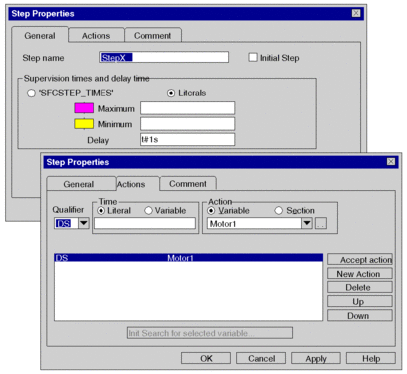Introduction
The sequence language SFC (Sequential Function Chart), which conforms to IEC 61131-3, is described in this section.
IEC conformity restrictions can be lifted through explicit enable procedures. Features such as multi token, multiple initial steps, jumps to and from parallel strings etc. are then possible.
Representation
Representation of an SFC section:

Objects
An SFC section provides the following objects for creating a program:
Steps
Macro steps (embedded sub-step sequences)
Transitions (transition conditions)
Transition sections
Action sections
Jumps
Links
Alternative sequences
Parallel sequences
Text objects to comment on the logic
Properties
The SFC editor has a background grid that divides the section into 200 rows and 64 columns.
The program can be entered using the mouse or the keyboard.
Input Aids
The SFC editor offers the following input aids:
Toolbars for quick and easy access to the desired objects
Automatic step numbering
Direct access to actions and transition conditions
Syntax and semantics are checked as the program is being written.
Incorrect objects are displayed in blue
Unknown words (e.g. undeclared variables) or unsuitable data types are marked with a red wavy line
Brief description of errors in the Quickinfo (Tooltip)
Information for variables and for transitions can be displayed in a Quickinfo (Tooltip)
type, name, address and comment of a variable/expression
type, name and comment of transitions
Different zoom factors
Show/hide the allocated actions
Tracking of links
Optimization of link routes
Step Properties
Step properties:

The step properties are defined using a dialog box that offers the following features:
Definition of initial steps
Definition of diagnostics times
Step comments
Allocation of actions and their qualifiers


